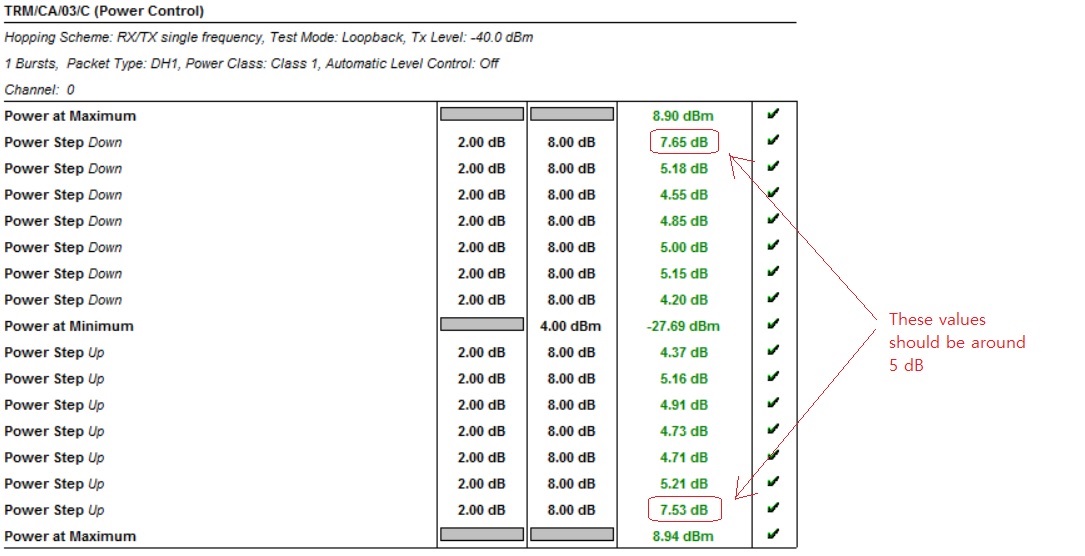Hi All,
Is there a clear method as to how the Power Control Step is characterized per the CC2564 datasheet?
As indicated in the 4.2.4 Bluetooth TX - EDR datasheet section, if the device uses the Typ 8dBm output power (MAX specification is not provided), what variation (MIN to MAX) should be expected at the Antenna? I see Note 2. Assumes 3-dB insertion loss from Bluetooth RF ball to Antenna.
However, the CC256x VS HCI Commands Wiki indicates that the default MAX TX power defined in the SP is +12dBm and corresponds to Power Level 15. If this accurate for the MAX TX value, then I would expect the MAX power control step specification to be as high as 9dB and above the Bluetooth Specification range.
Am I missing something here?
Thanks,
Robb



